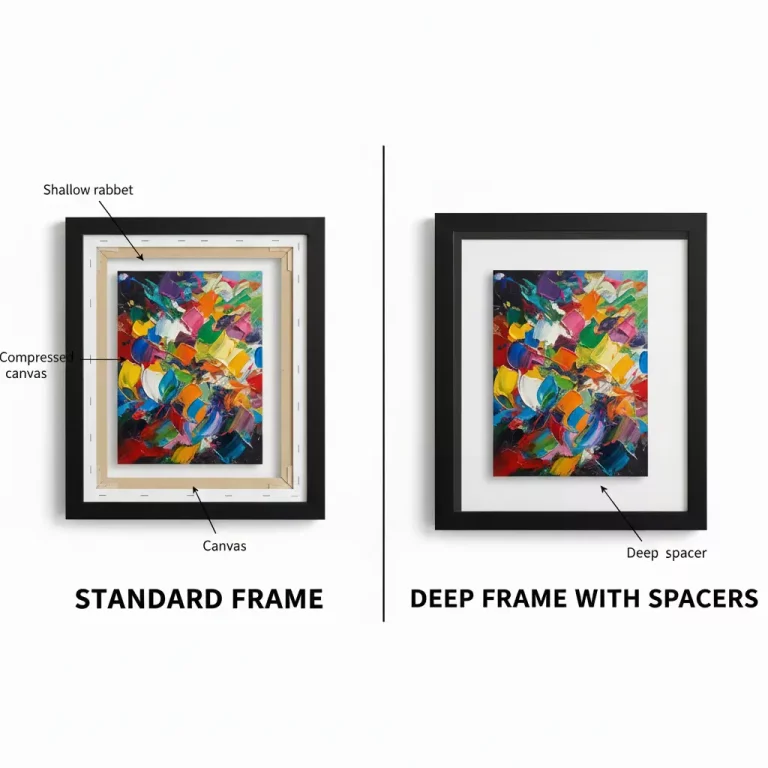Floating frames—also known as floater frames—are a contemporary favorite for giving canvas art a stunning visual lift. Their unique design creates the illusion that your artwork is “floating” within the frame, lending a clean gallery look that suits both modern and classic décor. Here’s your expert guide to choosing the perfect floating frame and hanging it flawlessly.
What is a Floating Frame?
Unlike a traditional frame that overlaps the edge of a canvas, a floating frame leaves a slight gap between the artwork and the inner edge of the frame. This spacing enhances the full view of your canvas—including painted sides or wraparounds—and adds striking depth to your presentation. For more on the distinctions between frame types, see A Complete Guide to Framing Canvas Art: Styles, Materials, and Tips.
Why Choose a Floating Frame?
- Full Image Display: Shows off every detail, even the artwork’s edges.
- Contemporary Style: Clean lines and minimalist edges match modern interiors.
- Protection: Offers framing support while avoiding contact with the canvas surface.
- Versatility: Works beautifully with both gallery-wrapped and thin-profile canvases.
If you’re displaying handcrafted works, discover more inspiration in What Makes a Photo Frame Beautiful? A Design Guide.
How to Select the Best Floating Frame
- Measure Your Canvas: Always measure height, width, and depth—floating frames are made to fit a variety of canvas thicknesses.
- Select Material & Finish: Wood provides warmth and texture, while metal gives a sleeker, more industrial vibe.
- Choose the Gap: Standard is 1/4″ to 1/2″ space between canvas and frame; enough for the “float” effect, not so much that it feels disconnected.
- Match Your Décor: Neutral finishes work universally, but don’t be afraid to try black, gold, or stained wood frames for contrast or accent.
For a step-by-step checklist of what makes a frame stand out, visit Beyond the Rectangle: 12 Creative Photo Frame Designs.
Hanging Your Floating Frame
- Secure the Canvas: Most floating frames come with clips or brackets designed for simple installation—just center and fasten your canvas from the rear.
- Install Hanging Hardware: Attach D-rings, wire, or sawtooth hangers to the back of your frame, depending on its weight and size.
- Measure & Mark: Use a level to mark your wall, aiming for eye-level placement.
- Hang Carefully: Use anchored screws for heavy art, and check that your frame sits flush against the wall.
For unique wall layouts, consider the techniques highlighted in How to Create a Stunning Gallery Wall: Layouts, Frames, and Ideas.
Tips for a Perfect Presentation
- Leave a small space between your floating-framed art and other wall pieces to let the “float” effect shine.
- For gallery arrangements, mix floating frames with standard frames for depth and drama.
- Clean your frame regularly to keep the lines sharp and dust-free.
Conclusion
Floating frames seamlessly blend sophistication with simplicity, making them the top choice for artists and collectors alike. With the right frame and smart wall placement, your canvas will truly stand out.





